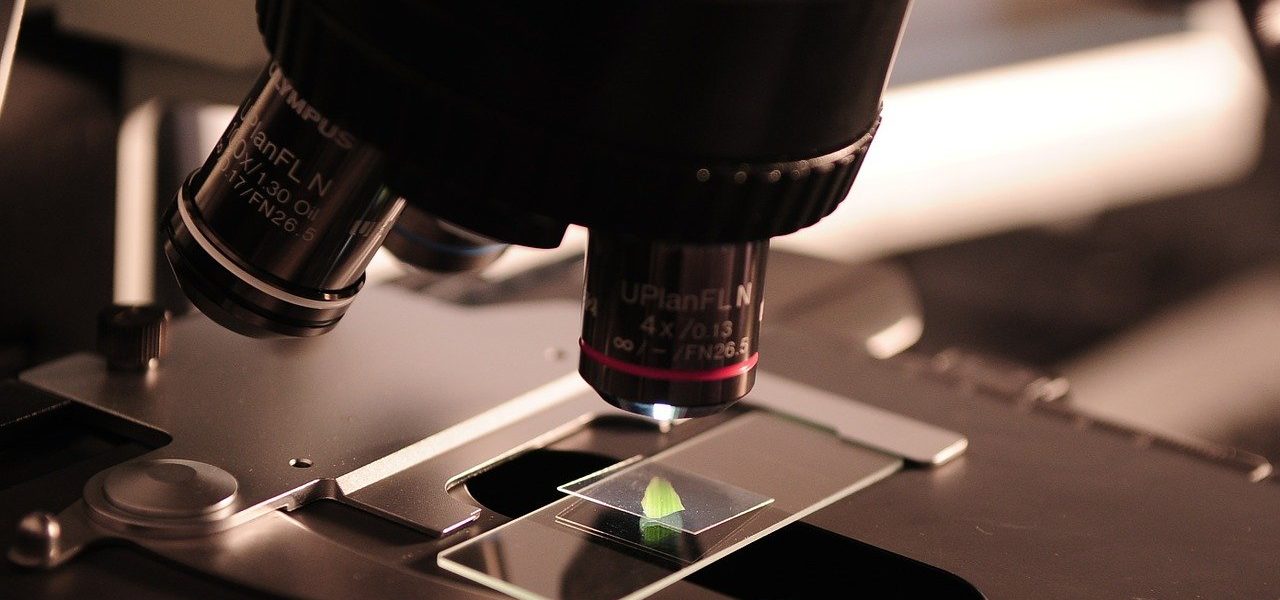Biotechnology is a broad field with amazing possibilities and advancements. Biotech companies have revolutionized multiple sectors, most notably agriculture and medicine.
With the help of the incredible biotechnology statistics we’ve gathered for you, you’ll see how invaluable biotech is to humanity.
Top Statistics on Biotechnology: Editor’s Choice
- The global biotechnology market value is expected to reach $727.1 billion by 2025
- Globally, venture capital firms invested $16.8 billion in private drug development in 2018
- Experts predict that the biotech employment rate will grow by 5% between 2019 and 2029
- 57% of Americans believe that GMO food is unsafe
- The top five biotech crop-growing countries hold 174.5 million hectares of planted biotech crops
- It takes an average of 12 years for an experimental drug to traverse from the laboratory setting to the patient
- The earliest known example of biotechnology is around 9,000 years old.

Biotechnology Statistics: In-Depth Look at the Market
1. The antidepressant pharmaceutical market value will likely reach $16 billion by 2025.
The pharmaceutical industry is very powerful in the United States, with companies like Johnson & Johnson and Pfizer that have established a strong presence on the market.
Looking at the biotech industry trends for antidepressants, the market for such medicine is primed to reach $16 billion by 2025.
2. The revenue of the biotech industry was $108.2 billion in 2020.
According to the reports on biotechnology industry statistics for 2020, it’s evident that biotech is a multi-billion-dollar industry. Even before 2020 came to a close, the industry market size was over $100 billion.
3. Eight biotechs raised $1.3 billion through the first quarter.
Countless industries fell on their knees in the face of the coronavirus pandemic. But the biotech company is withstanding the impact remarkably well.
We can see that resilience in the world biotechnology stats on offerings made in the industry: eight biotech companies raised $1.3 billion in Q1.
4. Health-associated applications accounted for 51% of the biotechnology industry share.
With the mounting prevalence of chronic diseases and demand for personalized medicine becoming a factor, it’s not much of a surprise that the biotech market for healthcare applications is so large.
That, combined with the growing use of applications in healthcare, explains why the market share for healthcare apps was at 51%.
5. On October 7, Johnson & Johnson’s market value was around $387 billion.
Johnson & Johnson recorded a market value of $387 billion on October 7. Looking further into the biotech financial statistics of this company, we can see that it remained stalworth throughout the entire coronavirus crisis, never dipping below $380 billion.
6. In 2018, corporate investors took part in biotech funding rounds worth $8 billion.
In 2018, the biotech venture funding was at its highest, compared to previous years. According to the biotech funding stats, funding for startups was $8 billion in 2018, compared to $4.2 billion in 2017.
Although the expenses for getting biotech products on the market were high, it’s great to see that investors were still willing to inject funds into product development.
The expenses may be high, but the prizes gained once the products pass testing can be huge.
7. The global biotechnology market size is expected to reach $727.1 billion by 2025.
Judging by the stats, the global biotechnology market is in for some hefty growth in the years to come. The biotechnology industry growth is estimated to reach $727.1 billion by 2025, and at a CAGR of 7.4%.
There are several drivers behind this kind of growth. Some of these include genetics in diagnostics, regenerative medicine, and artificial intelligence.
8. Standing at 73%, the United States had the largest 2016 share in the biotechnology industry.
The United States dominates the biotechnology market by a wide margin. Even the 2016 statistics on global biotechnology prove this: we can see that the US boasted a share of 73%.
Factors like heavy research and investment from various biotech companies in the region account for a great part of this growth.
9. Globally, venture capital firms invested $16.8 billion in private drug developers in 2018.
When it comes to investment in biotechnology, the statistics for private drug developers in 2018 were a surprising success. The score of $16.8 billion outclassed the one in 2017 by a whole $4.7 billion.
The average investment stood at $42.7 million, and there were approximately 37 investment rounds worth $100 million or more.
10. Molecular diagnostics will likely exceed $25.2 billion by 2025.
One of the more fascinating facts about the biotechnology sector is that it can help us detect and ward off so many illnesses.
For example, the application of molecular diagnostics, i.e., the detection, diagnostic, and monitoring of therapy through observing biological markers in the genome and proteome can give us invaluable insight into the mechanics of disease.
It’s no wonder that medical biotech is investing heavily in this technology. By 2025, an estimated $25.2 billion should go towards molecular diagnostics.
11. The market size of the global biotechnology sector was $449.06 billion in 2019.
The size of the biotech sector is rapidly increasing year by year. A biotech industry overview by Polaris Market Research shows us that the sector’s market size was $449.06 billion in 2019.
Given the rising prevalence of conditions that biotechnology can combat well (such as diabetes), this growth is more than welcome.
Biotechnology Facts and Statistics on Employment
12. There are more than 800,000 biotech employees in the US.
The facts about biotechnology reveal that there are close to one million employees in the biotech industry. The staff work across a range of occupations such as research, manufacturing, and technical support.
Moreover, the industry supports an excess of 4.7 million jobs across the US, both indirectly and directly.
13. Employment for biological technicians is likely to grow by 5% by 2029.
For those looking to get hired as biological technicians, the trends in biotech promise more room for employment.
The numbers tell us that employment in this line of work will grow by 5% in the period between 2019 and 2029, due to boosted demand for biological and technical research.
14. Since 2001, biotech companies have had around 1.66 million people under their employment.
Biotech has been fairly successful at opening novel employment opportunities. For those seeking a career in this niche, more and more biotechnology companies are open to a well-paying job.
Luckily, not only does biotech offer plenty of jobs, but it’s also profitable. By 2014, bioscience workers already had an average salary of $94,543.
The average US wage is a bit lower than that, so the bioscience industry proves to be fruitful money-wise.
15. There are 6,653 biotech companies in the United States.
A cursory look into the number of biotech companies in the US reveals that over 6,600 biotech companies operate in the country.
A more in-depth analysis highlights therapeutics as the most common in the biotech landscape, making up 29.1% of all these companies.
At 17.6%, analytics and diagnostics are the second most prominent field in biotech organizations.
16. The employment rate for biotech will likely grow by 5% between 2019 and 2029.
Career-wise, the biotech industry overview is positive. According to the biotechnology job growth statistics forecasts, the 5% employment rate in this field should grow at a faster pace than in the majority of other occupations.
17. In 2017, roughly $3.1 billion was invested in biotech startups.
Biotech startups often come with exciting promises of revolutionary technology and innovation. That explains why the United States invests handsome amounts of money in them.
According to biotech startup statistics, investments amounting to $3.1 billion went into propping up biotech startups in 2017.
18. In 2019, there were 87,500 biotechnology jobs.
The job market for biotechnology has been growing at an above-average rate. With a growth of 5%, there should be around 4,300 more jobs in this sector in 2029 than there were back in 2019.
When looking at the number of jobs in biotechnology, the Bureau of Labor Statistics shows that there were 87,500 jobs in that field in 2019.
19. The average biotechnologist makes $80,455 a year.
How much does a biotechnologist make? The average biotechnologist’s salary varies, but the median stands at about $80,455 a year.
That said, some earn as little as $37,500, while others rake in an enviable $102,000 every year. While the difference is noticeable, the disparity between the lowest and highest earners is not so high in contrast to other industries.

The Public Concern Over Biotechnology
20. Roughly 68% of people felt worried about biotechnological human “enhancement” in 2016.
The sentiment toward biotechnology is, broadly speaking, positive. However, one specific subset of it, namely human enhancement, seems to make people feel worried.
Biotechnology enhancements statistics suggest that more than half of all people felt worried about human biotech “augmentations” in 2016.
21. 57% of Americans believe that GMO food is unsafe.
Anti-GMO rumors are not new, and they’ve put a damper on scientific efforts fighting to eradicate world food shortages and disease.
Some shocking statistics on biotechnology show that more than half of Americans are skeptical about biotech foods.
With all the fearmongering from anti-GMO activists, it’s no wonder that there are so many Americans who are yet to embrace the technology.
Many people think GMO multinationals only care about maximizing profits. Meanwhile, only a mere few believe that biotech will do anything to solve world hunger or disease outbreaks.
22. 1,783 studies show that GMOs are safe.
With all these amazing facts about biotechnology out there, it’s amazing how much scorn GMOs suffer in the public eye.
But the truth is that scientific and medical research has categorically proven that GMOs are safe. The evidence is truly overwhelming, backed by a whopping 1,783 separate studies.
Biotechnology in Agriculture
23. Genetically engineered foods are grown on around 130 million acres overall.
Biotech plants have mushroomed globally in recent years. Some telling biotechnology facts reveal this — the scale of growth for such plants has surged from 3.6 million acres in 1996 to 130 million acres in 2018.
China, South Africa, Germany, Canada, Australia, Argentina, and Spain count among the biggest growers of biotech plants.
24. The percentages of biotechnology planting in the US in 2012 were 88% for corn, 93% for soy, and 94% for cotton.
The US grows the vast majority of soy, cotton, and corn. In 2012, biotechnology-assisted production of these crops almost completely replaced normal crop farming.
The National Agricultural Statistics Service (NASS) gathered the statistics in plant biotechnology that show the following numbers for the share of biotech crops — corn 88%, cotton 94%, and soy 93%.
25. Between 1996 to 2011, crops infused with the bacterium Bacillus thuringiensis decreased pesticide use by 9% worldwide.
Speaking of the benefits of biotechnology in agriculture, one of the greatest feats in this field is the slumping of pesticide use around the world.
Namely, pesticide use has gone down by 9% worldwide in the timeframe from 1996 to 2011.
This was done by introducing crops containing Bacillus thuringiensis, a bacterium that makes the crop resistant to a wide range of pests.
26. The top five biotech crop-growing countries comprise 174.5 million hectares of planted biotech crops.
Growing the vast bulk of global biotech crops rests on the shoulders of just five countries.
As per the biotechnology-in-agriculture statistics, these five countries (the U.S., Brazil, Argentina, Canada, and India) occupy 174.5 million hectares of biotech crops.
This represents more than 90% of the overall area for such crops worldwide.
27. The use of broad-spectrum insecticides in Arizona has gone down by 90% since introducing bT.
It’s one of the more alarming biotechnology facts that broad-spectrum insecticides kill insects indiscriminately.
This is because some insects like honeybees can be beneficial to crops, and their destruction interferes with crop pollination.
Fortunately, according to some biotechnology statistics, Bacillus Thuringiensis (BT) has reduced the need to use harsh insecticides by 90% in Arizona.
Farmers have used BT since the 1920s, but it was not until recently that they began rolling it out on a larger scale.
Other Cool Statistics About Biotechnology
28. In 2010, scientists at the J. Craig Venter Institute (JCVI) succeeded in creating a living cell containing a synthetic genome.
Are there any more interesting facts about biotechnology than those that manipulate life itself? Here’s one of these for you: 2010 was the year when the first organism was ever born without living parents.
Scientists at the J. Craig Venter Institute (JCVI) managed to create a living cell with a completely synthetic genome.
While its “birth” came with a stupefying price tag of $40 million, the achievement is well worth it on its own.
29. The earliest known example of biotechnology is around 9,000 years old.
Most biotechnology fun facts include relatively recent inventions and milestones. However, people tend to misunderstand how broad biotechnology is.
One of the best ways to demonstrate this is to point toward the earliest known example of biotech: fermentation.
Beer is one of mankind’s flagship biotech inventions, a part of humanity for millennia. In fact, the earliest instance of fermentation dates as far back as 7,000 BCE, recorded in Sumerian and Babylonian texts.
30. It takes an average of 12 years for an experimental drug to traverse from the laboratory setting to the patient.
Getting a drug from the lab to the market is far from a quick and simple process. One of the more interesting statistics biotech experts are aware of exemplifies just that notion.
Namely, the process of moving a newly-discovered drug from the initial stages to widespread public use lasts a whopping 12 years.
This period includes rigorous testing of all kinds to minimize any chances of the drug causing harm to the consumer.
31. Companies spend upwards of $314 million just to get a single drug to the market.
Similar to the extensive time involved, the costs of introducing a new drug to the market are also daunting. The biotech stats on this highlight anything north of $350 million for just a single drug pushed through to the end.
Keep in mind that this is just the minimum extrapolated cost. The prices for a drug going through the pipeline can soar as high as $2.8 billion. Meanwhile, the average stands somewhere at $895 million.
32. 50+% of Industry executives anticipate large-scale AI use in healthcare by 2025.
Artificial intelligence application in healthcare has been rapidly becoming a reality.
The artificial intelligence biotech statistics reveal that half of the industry execs or more expect large-scale AI implementation to target chronic conditions that affect the U.S. population.
On that subject, artificial intelligence statistics and trends also point to a likely marriage of AI and biotechnology, promising the elimination or better ways to manage chronic conditions.

Key Takeaways
The world of biotechnology coaxes us with wild promises, offering to tackle myriad diseases and feed the world, among other prospects.
We’ve seen what the industry can do, from bioengineering more resilient crops to creating life in tubes and beakers.
The most exciting stuff, however, may still be ahead of us. From the first synthetic cell will inevitably come the first macroorganism, and everything from diagnostics to treatments will only improve since discoveries join what we already know.
Hopefully, these biotechnology statistics helped shine a light on this field and how it can improve our lives.
Frequently Asked Questions
In 2020, the biotech industry is worth approximately $458 billion. Statistics about the biotechnology industry growth estimate that the industry will grow at a CAGR of 7.4%, which should see the sector’s worth rise to $727.1 billion by 2025.
Judging by the biotechnology facts, there are approximately 6,638 biotech companies in the United States.
According to biotechnology statistics, the industry is growing rapidly, and experts predict that a CAGR will reach 7.4% by 2025. That should lead to an overall industry worth of $727.1 billion.
- Arizona Farm Bureau
- Bio
- BioPharma Dive
- Biospace
- Bureau of Labor Statistics
- Evaluate
- ExploreBiotech
- Food Insight
- Genetic Literacy Project
- GlobeNewswire
- Grand View Research
- IBISWorld
- International Service for the Acquisition of Agri-biotech Applications
- iMedPub
- National Center for Biotechnology Information
- National Geographic
- Pew Research Center
- PRNewswire
- Select USA
- Tech Crunch
- USA Life Sciences
- USDA
- WBUR
- YCharts
- ZipRecruiter
